Discover SpaceTime with Stuart Gary
SpaceTime with Stuart Gary

SpaceTime with Stuart Gary
Author: Stuart Gary
Subscribed: 8,398Played: 303,141Subscribe
Share
© Copyright bitesz.com
Description
19 years on Australian Public Radio (as StarStuff), 8 years of podcasting and counting. We have a lot of content to share with you.
Recognized worldwide by our listeners and industry experts as one of the best and most thoroughly researched programs on Astronomy, Space, and Science News.
Hosted by Stuart Gary, a veteran radio science reporter, broadcaster and now podcaster.
Keep up-to-date and learn something new with every episode.
New episodes weekly. Three new episodes are published on Mondays for our subscribers and individual episodes publicly on Monday, Wednesday, and Friday.
Show your support for SpaceTime, help us reach our goals with early access to commercial-free episodes and bonuses via Supercast, Patreon, Apple Podcasts and YouTube.
Links at https://spacetimewithstuartgary.com/about
Enjoy!
Become a supporter of this podcast: https://www.spreaker.com/podcast/spacetime-with-stuart-gary--2458531/support.
Recognized worldwide by our listeners and industry experts as one of the best and most thoroughly researched programs on Astronomy, Space, and Science News.
Hosted by Stuart Gary, a veteran radio science reporter, broadcaster and now podcaster.
Keep up-to-date and learn something new with every episode.
New episodes weekly. Three new episodes are published on Mondays for our subscribers and individual episodes publicly on Monday, Wednesday, and Friday.
Show your support for SpaceTime, help us reach our goals with early access to commercial-free episodes and bonuses via Supercast, Patreon, Apple Podcasts and YouTube.
Links at https://spacetimewithstuartgary.com/about
Enjoy!
Become a supporter of this podcast: https://www.spreaker.com/podcast/spacetime-with-stuart-gary--2458531/support.
981 Episodes
Reverse
Embark on an astronomical odyssey with SpaceTime Series 27 Episode 48, as we unveil the most detailed view of the expanding universe to date. The first-year data from DESI, the Dark Energy Spectroscopic Instrument survey, is in, and it's changing the cosmic game. This groundbreaking five-year study is mapping the universe in 3D, charting the enigmatic influence of dark energy over time. Will the universe meet a chilling big freeze, or will dark energy's relentless acceleration lead to a catastrophic big rip? With precision better than 1%, DESI's data is painting a complex picture of our cosmic destiny.Then, join us in celebrating a celestial milestone as the Solar Observatory spacecraft SOHO captures its 5000th comet. SOHO's unexpected role as a prolific comet hunter has deepened our understanding of these enigmatic sun-grazers, offering insights into the sun's atmosphere and the large-scale structure of comets.Plus, we follow the Soyuz MS-24 capsule's return to Earth, bringing home a NASA astronaut and the first Belarusian cosmonaut after a landmark mission. With blue skies over Kazakhstan, the Soyuz's journey from the International Space Station to the steppe marks a successful conclusion to an expedition of cosmic proportions.And don't miss our Science Report, where we delve into the impact of climate change on wine regions, the link between mood disorders and driving in young people, and the debate over a meteor impact ejecta potentially being alien technology.For more SpaceTime and to support the show, visit our website at https://spacetimewithstuartgary.com. Tune in to SpaceTime on your favorite podcast app with our universal listen link: https://spacetimewithstuartgary.com/listen, and access show links via https://linktr.ee/biteszHQ. Support the show: https://www.spreaker.com/podcast/spacetime-with-stuart-gary--2458531/support.This episode of SpaceTime is brought to you by NordPass. Secure your digital life and keep the cosmic exploration going with the password manager you can trust. Visit www.bitesz.com/nordpass for a special offer.
Prepare to illuminate the shadowy frontiers of space in SpaceTime Series 27 Episode 47. We begin by shedding light on new findings that reveal brown dwarfs, those celestial enigmas straddling the line between the largest planets and the smallest stars, are far more star-like than we ever imagined. Born from the same intricate dance of gas and dust that gives rise to stars, these failed stars have a story more intertwined with their luminous kin than previously thought. Next, we peer into the future, where the clock is ticking down to an explosive cosmic event. Astronomers eagerly anticipate a nova eruption within a binary star system, set to dazzle the skies sometime before year's end. This stellar spectacle, a cyclical detonation on the surface of a white dwarf, promises to be a beacon in the night, echoing observations that date back over a century.We then voyage to the extreme starburst galaxy M82, a crucible of creation churning out new stars at a rate tenfold that of our own Milky Way. With the James Webb Space Telescope piercing through the cosmic dust, we get a front-row seat to the galactic winds and star-forming frenzy defining this compact powerhouse of a galaxy.And in the Science Report, we delve into the role of homosexual behavior in mammalian social bonding, the alarming rise in simultaneous heatwaves and sea level extremes on global coastlines, the potential psychological effects of teenage screen time, and the latest in home entertainment and security tech that's shaping our digital lives.For the full cosmic journey, visit our website at https://spacetimewithstuartgary.com and support the show at https://www.spreaker.com/show/spacetime. Discover the universe's wonders with us on SpaceTime.This week's episode is brought to you by NordPass. Navigate the digital universe with confidence using a password manager you can trust. Secure your cosmic exploration at www.bitesz.com/nordpass.Listen to SpaceTime on your favorite podcast app and follow us on Twitter @stuartgary, Instagram, YouTube, and Facebook.Become a supporter of this podcast: https://www.spreaker.com/podcast/spacetime-with-stuart-gary--2458531/support.
SpaceTime Series 27 Episode 46: The Cosmic Dance of Neutron Stars and Black HolesJoin us on a thrilling journey through the cosmos in SpaceTime Series 27 Episode 46, where we delve into the mysteries of a possible neutron star-black hole merger detected in gravitational waves. The LIGO-Virgo-KAGRA collaboration may have stumbled upon a cosmic ballet between the densest objects in the universe, offering tantalizing clues about the elusive mass gap and challenging our understanding of stellar evolution.Next, we explore the cannibalistic tendencies of stars as a new study reveals that stars often end up devouring their own planets. This celestial feast, found in roughly 8% of binary star systems examined, raises questions about the stability of planetary orbits and could reshape our knowledge of cosmic dynamics.And as North America was plunged into darkness by a total solar eclipse, scientists seized the opportunity to conduct groundbreaking research. From rockets piercing the upper atmosphere to jets chasing the eclipse at dizzying altitudes, we look at the scientific endeavors that took advantage of this spectacular celestial event.Plus, in the Science Report, we discuss the implications of "forever chemicals" in our water resources, the heart failure benefits of a diabetes drug, the discovery of Australia's oldest pottery, and the controversy surrounding a prestigious clinic's endorsement of Reiki.For more SpaceTime and to support the show, visit our website at https://spacetimewithstuartgary.com, where you can access our universal listen link, find show notes, and learn how to become a patron. Listen to SpaceTime on your favorite podcast app with our universal listen link: https://spacetimewithstuartgary.com/listen and access show links via https://linktr.ee/biteszHQ. Support the show: https://www.spreaker.com/podcast/spacetime-with-stuart-gary--2458531/support.This episode of SpaceTime is brought to you by NordPass. Secure your digital life and keep the cosmic exploration going with the password manager you can trust. Visit www.bitesz.com/nordpass for a special offer.https://spacetimewithstuartgary.com https://www.bitesz.com/show/spacetime/ This week’s guests include: Fan Liu from Monash University Sungrazer project principal investigator Karl Battams from the U.S. Naval Research Lab Washington, D.C.. And our regular guests: Alex Zaharov-Reutt from techadvice.life Tim Mendham from Australian SkepticsEpisode Chapters(00:00) A possible neutron star black hole merger detected in gravitational waves(00:47) LIGO has detected what might be either the merger of two neutron stars(06:22) New study confirms that some stars may have swallowed planets or planetary material(13:58) NASA launched a fleet of rockets and jets to monitor last weeks solar eclipse(16:54) A new study warns that we're likely underestimating future impact of forever chemicals(19:19) Mayo Clinic slammed for allowing staff nurse to promote rank pseudoscience(22:50) Spacetime is available every Monday, Wednesday and Friday through various podcasting services
SpaceTime Series 27 Episode 45 *Perseverance collects its 24th sample on Mars NASA’s Mars Perseverance Rover has just collected its 24 geological sample from the surface of the red planet. The drill core offers new clues about Jezero Crater and the lake it may have once held. *New date set for Starliner's first manned mission NASA has set May 6 as the opening of the launch window for the first manned flight of Boeing’s long troubled CST-100 Starliner. The flight to the International Space Station was originally slated for this month. *Space junk slams into a Florida home NASA says it’s analyzing an object that crashed into a Florida man's home last week which is suspected of being piece of debris jettisoned from the International Space Station. *The Science Report New research shows that the warming climate will turn Australia’s soil into a net emitter of carbon dioxide. A new study claims women with a low resting heart rate had a slightly higher chance of a criminal lifestyle. Identifying criminals by airborne forensic DNA evidence. Skeptics guide to African witchcraft trials https://spacetimewithstuartgary.com https://bitesz.com This week’s guests include our regular guests: Alex Zaharov-Reutt from techadvice.life Tim Mendham from Australian SkepticsThis episode is brought to you by NordPass....the password manager we use ad quite frankly couldn't get by online without. You should really check it out. And we havea great deal for you at the moment...plus a free trial...for all the details visit www.bitesz.com/nordpassBecome a supporter of this podcast: https://www.spreaker.com/podcast/spacetime-with-stuart-gary--2458531/support.
The Space, Astronomy and Science Podcast. SpaceTime Series 27 Episode 44 *New Clues About Mars’ Ancient Water NASA’s Mars Curiosity rover has arrived at an area in Gale Crater’s Mount Sharp that may show evidence liquid water flowed on the red planet for much longer than previously thought. *NASAs new Moon buggies NASA has selected three companies to help it develop its proposed new Moon buggy --- the lunar terrain vehicle or LTV. *The largest digital camera ever built for astronomy After two decades of work, scientists and engineers at the US Department of Energy's Stanford Linear Accelerator Centre’s National Accelerator Laboratory have finally completed the Legacy Survey of Space and Time Camera -- The largest digital camera ever built for astronomy. *The Science Report A new study shows that high blood pressure is the leading risk factor for death. The Persian Plateau identified as pivotal for Homo sapiens migration out of Africa. Volcanoes could hold the clues to how the first building blocks of life were formed. Alex on Tech more controversy for Google https://spacetimewithstuartgary.com https://bitesz.com Listen to SpaceTime on your favorite podcast app with our universal listen link: https://spacetimewithstuartgary.com/listen and access show links via https://linktr.ee/biteszHQThis episode is brought to you by NordPass...your password manager that will relieve password stress in your life. Get organised for not very much money...visit www.bitesz.com/nordpass and check out our very special deal.Become a supporter of this podcast: https://www.spreaker.com/podcast/spacetime-with-stuart-gary--2458531/support.
The Space, Astronomy & Science Podcast.SpaceTime Series 27 Episode 43*The Milky Way's Faintest Star System UnveiledAstronomers have unveiled the faintest star system known to orbit our Milky Way galaxy, Ursa Major III Unions I. This ancient and elusive star system, reported in the Astrophysical Journal, may be one of the most dark matter-dominated systems discovered, lying just 30,000 light-years away. With only about 60 stars and a mass just 16 times that of the Sun, it challenges our understanding of galaxy formation and the role of dark matter in the cosmos.*Queensland's Bowen Orbital Spaceport Launches into ActionAustralia's space industry takes a giant leap with the official opening of the Bowen Orbital Spaceport in Queensland. Set to host its inaugural launch with Gilmore Space's Ares rocket, the spaceport marks a significant milestone in the nation's commercial space endeavors. Ares, a hybrid propulsion rocket, aims to deliver payloads into low Earth orbit, signifying Australia's re-emergence as a space-launching nation.*Southern Launch Prepares for Next Milestone in South AustraliaOver in South Australia, Southern Launch is gearing up for its next test flight at the Koonibba Test Range. The upcoming mission will test groundbreaking hybrid propulsion technology using paraffin wax and liquid oxygen, which could revolutionize rocket handling. This test serves as a precursor to developing the larger SL-1 orbital launcher, highlighting the range's unique capability for both suborbital experiments and orbital launches.For more SpaceTime and to support the show, visit our website at https://spacetimewithstuartgary.com where you can access our universal listen link, find show notes, and learn how to become a patron. Listen to SpaceTime on your favorite podcast app with our universal listen link: https://spacetimewithstuartgary.com/listen and access show links via https://linktr.ee/biteszHQ. Support the show: https://www.spreaker.com/podcast/spacetime-with-stuart-gary--2458531/support. For more space and astronomy podcasts, visit our HQ at https://bitesz.com.This episode of SpaceTime is brought to you by the password manager you can trust, NordPass. Take the hassle out of online security and help support SpaceTime by visiting www.nordpass.com/stuart for a special offer. Secure your digital life and keep the cosmic exploration going!This episode is brought t you by NordPass...your digital salvation. Check out the details and get our very special deal at www.bitesz.com/nordpass
This episode is brought to you by NordPass...the password manager (and more) that you need in your life for not very much money. To get the deal, visit www.nordpass.com/stuartThe Space, Astronomy & Science Podcast.SpaceTime Series 27 Episode 42*Water's Persistent Presence in Mars' Gale CraterMars' Gale Crater may have harbored water far longer than scientists previously believed, challenging our timeline of the Red Planet's arid transformation. New evidence from NASA's Curiosity rover, detailed in the journal Geology, suggests that underground water may have been present in the crater during the latter part of the Hesperian period, 3.7 to 3 billion years ago. This discovery, marked by deformed desert sandstone, hints at a more habitable past and could reshape our search for ancient Martian life.*The Sun's Spectacular Double Solar FlareThe Sun has unleashed its most powerful eruption since 2017 with a double solar flare event, signaling a ramp-up towards solar maximum. The X1.1-class flare, coupled with a series of M-class flares, has sparked vivid auroral displays and heightened space weather activity. This dynamic solar performance, captured by ESA's SMOS and Swarm satellites, underscores the Sun's influence on Earth's magnetosphere and the importance of real-time space weather monitoring.*The SR-71 Blackbird's Alleged Successor: The SR-72Rumors persist of the Pentagon's development of a hypersonic aircraft, the SR-72, potentially succeeding the legendary SR-71 Blackbird. Reports suggest that Lockheed Martin's Skunk Works is behind this classified project, which could reach Mach 6 speeds and revolutionize reconnaissance with its unmanned design. If true, this aircraft could redefine the boundaries of aviation and surveillance technology.*April Night Skies: Alpha Centauri to the Lyrids Meteor ShowerAs autumn's grip tightens, the night skies of April offer a celestial tapestry rich with wonders. From the Southern Cross standing upright to the nearest star system, Alpha Centauri, being prominently on display, stargazers have much to explore. The annual Lyrids meteor shower promises a dazzling show, peaking on April 22-23, while the planets Jupiter, Mars, Saturn, and Venus grace the morning and evening skies with their presence.For more SpaceTime and to support the show, visit our website at https://spacetimewithstuartgary.com where you can access our universal listen link, find show notes, and learn how to become a patron. Listen to SpaceTime on your favorite podcast app with our universal listen link: https://spacetimewithstuartgary.com/listen and access show links via https://linktr.ee/biteszHQ. Support the show: https://www.spreaker.com/podcast/spacetime-with-stuart-gary--2458531/support. For more space and astronomy podcasts, visit our HQ at https://bitesz.com.
The Space, Astronomy & Science Podcast.SpaceTime Series 27 Episode 41*The Scandinavian Connection: Born from Greenland's Ancient CrustIn a groundbreaking geological study, scientists have traced the oldest Scandinavian bedrock back to its origins in Greenland, revealing a continental connection dating back 3.75 billion years. Published in the journal Geology, this research uncovers a hidden chapter of Earth's crust beneath Denmark and Scandinavia, suggesting a tectonic detachment from Greenland that predates previous estimates by a quarter of a billion years. The discovery, locked within zircon minerals, not only reshapes our understanding of continental drift but also underscores Earth's uniqueness in the solar system as a cradle for life.*Blue Origin's Orbital Reef: A Leap Towards Commercial Space HabitatsBlue Origin, in collaboration with Sierra Space, has achieved a significant milestone in the development of the Orbital Reef commercial space station. Under NASA's watchful eye, the project has successfully tested key life support systems essential for sustaining human presence in orbit. With a potential operational date as early as 2027, Orbital Reef aims to provide a voluminous habitat for ten occupants, marking a new era in space exploration and research as the International Space Station approaches retirement.*Space's Role in Climate Change Monitoring IntensifiesThe World Meteorological Organization's latest report delivers a stark reality check, with 2023 witnessing unprecedented levels of greenhouse gases, rising seas, and melting ice. In response, the fleet of Copernicus Sentinel satellites operated by the European Union plays an increasingly vital role in monitoring our changing planet. These eyes in the sky offer critical data, from sea ice dynamics to deforestation, aiding policymakers in crafting strategies to combat the escalating climate crisis.*Dragon's Bounty: A Resupply Mission Brimming with Scientific PromiseSpaceX's CRS-30 mission, aboard the upgraded Dragon spacecraft, has successfully docked with the International Space Station, delivering over 2.7 tonnes of vital supplies and novel experiments. This cache of scientific endeavors includes a joint CSIRO-Boeing 3D mapping project, the Burst Cube satellite for studying cosmic gamma-ray bursts, and the GEARS initiative for identifying antibiotic-resistant microbes in space. With over 250 experiments in progress, the orbiting laboratory continues to be a beacon of discovery and innovation.For more SpaceTime and to support the show, visit our website at https://spacetimewithstuartgary.com where you can access our universal listen link, find show notes, and learn how to become a patron. Listen to SpaceTime on your favorite podcast app with our universal listen link: https://spacetimewithstuartgary.com/listen and access show links via https://linktr.ee/biteszHQ. Support the show: https://www.spreaker.com/podcast/spacetime-with-stuart-gary--2458531/support. For more space and astronomy podcasts, visit our HQ at https://bitesz.com.This episode of SpaceTime is brought to you by NordPass...the password manager we all need in our lives. And with our special offer, it won't even cost very much money. Grab the deal at www.nordpass.com/stuart ...Remove a lot of angst from your life and help support SpaceTime....#spacetime #podcast #space #astronomy
The Space, Astronomy & Science Podcast.SpaceTime Series 27 Episode 40*Magnetic Mysteries at the Milky Way's HeartThe Event Horizon Telescope has revealed organized magnetic fields swirling at the periphery of Sagittarius A*, the supermassive black hole at the Milky Way's core. In a groundbreaking observation, astronomers have captured these fields in polarized light, finding remarkable similarities to the black hole in galaxy M87. This discovery suggests that strong magnetic fields could be a universal trait among black holes, influencing how they interact with their surrounding matter. The study's implications stretch far beyond the iconic Sagittarius A*, offering a glimpse into the enigmatic behavior of black holes and their powerful ejections into space.*The Birth of Blue Supergiants Through Stellar MergersBlue supergiants, some of the universe's most luminous and massive stars, have long puzzled astronomers due to their abundance and solitary nature. A new study posits that these cosmic behemoths, often found alone, could be the result of binary star systems merging. This revelation, derived from simulations and observations in the Large Magellanic Cloud, challenges previous theories and suggests that stellar mergers play a pivotal role in the life cycle of galaxies and their stellar populations.*Webb Telescope Unveils the Star-Forming Tendrils of NGC 604NASA's James Webb Space Telescope peeks into NGC 604, a vibrant nursery of star formation within the Triangulum Galaxy, M33. Webb's infrared gaze has uncovered the intricate dance of star birth, highlighting massive blue stars and intricate gas filaments. This detailed view of NGC 604, a region teeming with over 200 massive stars, offers astronomers a rare opportunity to study these celestial giants at a critical stage in their evolution, providing new insights into the complex processes that shape galaxies.*New Crew Arrives at the International Space StationThe Soyuz MS-25 mission has successfully delivered a trio of spacefarers to the International Space Station after an initial launch delay. The mission continues the tradition of international partnership in space, as the ISS remains one of the few collaborative ventures between Russia and the West amidst geopolitical tensions.For more SpaceTime and to support the show, visit our website at https://spacetimewithstuartgary.com where you can access our universal listen link, find show notes, and learn how to become a patron. Listen to SpaceTime on your favorite podcast app with our universal listen link: https://spacetimewithstuartgary.com/listen and access show links via https://linktr.ee/biteszHQ. Support the show: https://www.spreaker.com/podcast/spacetime-with-stuart-gary--2458531/support. For more space and astronomy podcasts, visit our HQ at https://bitesz.com.https://spacetimewithstuartgary.com https://bitesz.com This week’s guests include: WEBB senior Project Scientist Jane Rigby Josef Aschbacher, Director of ESA Earth Observation Programs Michael Rast, ESA’s Earth Observation Senior Advisor. And our regular guests: Alex Zaharov-Reutt from techadvice.life Tim Mendham from Australian Skeptics Jonathan Nally from Sky and Telescope Magazine 🌏 Get Our Exclusive NordPass deal here ➼ https://www.nordpass.com/stuart or use the checkout code STUARTGARY. The discount is incredible! And it’s risk-free with Nord’s 30-day money-back guarantee! ✌ Listen to SpaceTime on your favorite podcast app with our universal listen link: https://spacetimewithstuartgary.com/listen and access show links via https://linktr.ee/biteszHQ
The Space, Astronomy & Science Podcast.SpaceTime Series 27 Episode 39*Unveiling the Einasto Supercluster: A Cosmic BehemothAstronomers have unveiled one of the most massive superclusters ever observed, a colossal structure named the Einasto Supercluster. Comprising thousands of galaxies and a mass of 20 followed by 15 zeros in stars, this supercluster is a testament to the pioneering work of Jan Oort, whose 95th birthday coincides with the discovery. The Einasto Supercluster, stretching 360 million light-years across, provides new insights into the large-scale structure of the universe, challenging our understanding of galactic evolution and the gravitational forces at play in these vast cosmic metropolises.*Humans Alter Asteroid's Path and ShapeIn a groundbreaking mission, humans have altered the shape and orbit of an asteroid. NASA's DART spacecraft collided with the asteroid moon Dimorphos, not only knocking it off course but also reshaping its entire structure. This kinetic impact demonstration confirms our capability to deflect potentially hazardous asteroids and marks a significant milestone in planetary defense strategies. The aftermath of the collision has been meticulously analyzed, revealing a reshaped Dimorphos with a shorter orbital period and a new, elongated form.*Hubble's New Glimpse into Jupiter's Stormy AtmosphereThe Hubble Space Telescope has captured stunning new images of Jupiter, offering a fresh perspective on the gas giant's turbulent weather systems. The iconic Great Red Spot, a storm large enough to engulf Earth, is showcased alongside other atmospheric phenomena. Despite its gradual shrinkage and color changes, the Great Red Spot still rages with high-speed winds, interacting with smaller vortices that may be influencing its longevity. Hubble's detailed observations continue to unravel the mysteries of Jupiter's dynamic climate and the forces shaping its grand tempests.For more SpaceTime and to support the show, visit our website at https://spacetimewithstuartgary.com where you can access our universal listen link, find show notes, and learn how to become a patron. Listen to SpaceTime on your favorite podcast app with our universal listen link: https://spacetimewithstuartgary.com/listen and access show links via https://linktr.ee/biteszHQ. Support the show: https://www.spreaker.com/podcast/spacetime-with-stuart-gary--2458531/support. For more space and astronomy podcasts, visit our HQ at https://bitesz.com.
The Space, Astronomy & Science Podcast.SpaceTime Series 27 Episode 38*Witnessing the Final Stages of Planetary FormationFor the first time, astronomers have captured the end of the planetary formation process, observing the dispersal of gas from a young star's circumstellar disk. The James Webb Space Telescope has provided unprecedented images of the Tchar star system, where a vast gap in its disk suggests we're witnessing the final act in its planetary evolution. The study sheds light on the fate of gas giants and terrestrial planets, revealing the delicate dance of creation that shapes nascent solar systems.*The Devil's Comet: A Green Spectacle in the SkyComet 12P/Pons-Brooks, with its distinctive green hue and horned appearance, is making its first visit to the inner solar system in over 70 years. This Mount Everest-sized icy wanderer could grace our skies with its naked-eye visibility as it reaches perihelion this April. Nicknamed the 'Devil's Comet', its cryovolcanic nature promises a celestial show that won't return until 2095.*The Dust that Doomed DinosaursA new study proposes that fine dust particles from the Chicxulub asteroid impact contributed significantly to the mass extinction event that ended the reign of the non-avian dinosaurs. By blocking photosynthesis and plunging the Earth into a cold, dark winter, this fine dust may have been the final nail in the coffin for many species, reshaping life on our planet forever.For more SpaceTime and to support the show, visit our website at https://spacetimewithstuartgary.com where you can access our universal listen link, find show notes, and learn how to become a patron.Listen to SpaceTime on your favorite podcast app with our universal listen link: https://spacetimewithstuartgary.com/listen and access show links via https://linktr.ee/biteszHQSupport the show: https://www.spreaker.com/podcast/spacetime-with-stuart-gary--2458531/supportFor more space and astronomy podcasts, visit our HQ at https://bitesz.com
The Space, Astronomy & Science Podcast.SpaceTime Series 27 Episode 37*Betelgeuse's Surprising Spin: A Red Supergiant's SecretsAstronomers have been intrigued by the rapid rotation of the red supergiant star Betelgeuse, but new insights suggest its seemingly swift spin could be an illusion caused by its boiling surface. The star's dimming, once thought to herald an imminent supernova, turned out to be dust obscuring our view. Located in Orion, Betelgeuse's tumultuous surface, with convective bubbles the size of Earth's orbit, challenges our understanding of stellar dynamics.*The Moon's Cratered Past: A History Written in ImpactsNew research indicates the Moon endured more asteroid and comet bombardments than previously thought, potentially reshaping our knowledge of its geological history. This study reveals that early impacts may have left subtle marks, eluding detection due to a still-cooling lunar surface. As the Moon's magma ocean solidified, these ancient impacts could tell a tale of a dynamic early solar system.*Rocket Lab's Historic NRO Mission from American SoilRocket Lab's Electron rocket has launched its first mission for the National Reconnaissance Office from NASA's Wallops Flight Facility in Virginia. The classified NRO-123 mission marks a new chapter for the company, expanding its launch capabilities beyond New Zealand's shores and continuing its streak of delivering payloads to orbit with precision.*Climate Change Breaks New RecordsThe World Meteorological Organization reports unprecedented levels of greenhouse gases, warming temperatures, and rising seas, signaling an escalating climate crisis. Despite this, renewable energy sees a significant uptick, offering a beacon of hope amidst the environmental challenges.*The Rise of Alternative Spirituality Among WomenAn increasing number of women are exploring non-traditional spiritual practices, from witchcraft and the occult to tarot and psychic readings. This trend reflects a search for meaning and certainty in uncertain times, with the psychic industry booming as a result.For more SpaceTime and to support the show, visit our website at https://spacetimewithstuartgary.com where you can access our universal listen link, find show notes, and learn how to become a patron.Listen to SpaceTime on your favorite podcast app with our universal listen link: https://spacetimewithstuartgary.com/listen and access show links via https://linktr.ee/biteszHQSupport the show: https://www.spreaker.com/podcast/spacetime-with-stuart-gary--2458531/supportFor more space and astronomy podcasts, visit our HQ at https://bitesz.com
The Space, Astronomy & Science Podcast.SpaceTime Series 27 Episode 36*The Precise Mass of Neutron Stars UnveiledAstronomers have pinpointed the exact upper mass limit for non-rotating neutron stars, providing a critical piece to the puzzle of black hole evolution. The study, detailed in Physical Review D, reveals that the heaviest non-rotating neutron stars weigh about 2.25 solar masses. This breakthrough in nuclear physics and astrophysics could refine our understanding of the stellar life cycle and the transition from neutron stars to black holes.*Japan's Aspirations for Private Spaceflight Go Up in SmokeJapan's first privately operated space launch provider, Space One, faced a fiery setback as its new solid-fuel rocket exploded seconds after liftoff. The ill-fated Karaos rocket, carrying a government test satellite, disintegrated over the Wakayama region, underscoring the harsh realities of space exploration. The incident highlights the challenges faced by emerging private space companies in the competitive launch market.*NASA's PACE Satellite Embarks on a Climate OdysseyNASA's PACE satellite has successfully launched aboard a SpaceX Falcon 9 rocket to begin its mission of monitoring Earth's changing oceans and atmosphere. The $948 million mission will utilize hyperspectral imaging to study the planet's plankton, aerosols, clouds, and ocean ecosystems with unprecedented detail. PACE aims to enhance weather predictions, track climate change, and uncover the intricate balance of our global environment.*Dark Matter Data Retrieved from the StratosphereNASA's mission to map dark matter around galaxy clusters has been salvaged thanks to an innovative data recovery system from the University of Sydney. Despite a rough landing in Argentina that damaged the balloon-based telescope, the system successfully retrieved over 200GB of valuable data. This mission underscores the innovative approaches to overcoming the challenges of high-altitude astronomical research.Plus, we delve into the story of how climate change is affecting polar bears, the decline in humpback whale populations, and the origins of chocolate as revealed by ancient vessels. And we explore the curious case of the "alien mummies" that turned out to be quite earthly in origin.For more SpaceTime and show links, visit https://spacetimewithstuartgary.com and access our universal listen link at https://spacetimewithstuartgary.com/listen. Don't forget to support the show at https://www.spreaker.com/podcast/spacetime-with-stuart-gary--2458531/support and follow us for more space and astronomy updates at our HQ at https://bitesz.com.
The Space, Astronomy & Science Podcast.SpaceTime Series 27 Episode 36*Mars Unveils a Colossal Volcanic SecretAstronomers have discovered a massive ancient volcano on Mars, hidden beneath an ice sheet in the planet's Tharsus volcanic province. This behemoth, which has eluded detection by orbiting spacecraft since 1971, could offer new insights into the Red Planet's geologic past and potential for life. The structure, tentatively named Noctus Volcano, stands over 29,600 feet tall and spans about 280 miles across. Its discovery near the labyrinthine Noctus Labyrinthus and the colossal Valles Marineris suggests a long history of volcanic activity and hints at the presence of glacial ice beneath its surface.*Europe's New Radar Mission to Monitor Climate ChangeThe European Space Agency is gearing up for ROSAL, a cutting-edge Earth observation mission set to scrutinize the planet's oceans, land, and ice. With the largest deployable planar antenna array ever built, ROSAL will complement existing Copernicus Sentinel missions by using L-band radar to penetrate vegetation and ice, providing invaluable data for climate change research, agriculture, and geohazard monitoring.*International Space Station's Revolving DoorIt's been a bustling period aboard the ISS with multiple crew rotations. Axiom Space's third private mission has concluded, paving the way for their fourth venture and future space station modules. The arrival of NASA's SpaceX Crew-8 promises six months of groundbreaking experiments, including 3D organoid growth to study diseases. Meanwhile, SpaceX Crew-7's departure marks the end of a mission filled with over 250 experiments, ranging from immune cell behavior in microgravity to artificial retina production.*AI Robot Chemist Could Pave the Way for Martian Oxygen ProductionScientists have developed an AI-powered robot chemist capable of extracting oxygen from Martian meteorites. This breakthrough suggests that future Mars missions might sustain human life and fuel rockets using the Red Planet's own resources. The AI robot's ability to identify and react chemicals to produce oxygen could revolutionize space exploration logistics and support long-term colonization efforts.For more SpaceTime and to support the show, visit our website at https://spacetimewithstuartgary.com where you can access our universal listen link, find show notes, and learn how to become a patron.Listen to SpaceTime on your favorite podcast app with our universal listen link: https://spacetimewithstuartgary.com/listen and access show links via https://linktr.ee/biteszHQSupport the show: https://www.spreaker.com/podcast/spacetime-with-stuart-gary--2458531/supportFor more space and astronomy podcasts, visit our HQ at https://bitesz.com📋 Episode Chapters(00:00) Could a robotic chemist create oxygen from resources already on Mars(00:27) Giant ancient volcano and glacial ICE sheet discovered on Mars(07:13) European Space Agency planning new Earth observation mission to monitor climate change(16:23) Roselle is an operational mission that acquires data all the time(18:02) SpaceX launched a Dragon capsule bound for the International Space Station last month(20:48) Could robotic chemist create oxygen out of resources already available on Mars(22:55) High temperatures over 33 degrees Celsius increase risk of stroke, study finds(25:28) American politicians want to ban TikTok over concerns about propaganda on social media(27:34) Metta have decided they will not pay for news content on Facebook(28:50) Microsoft are about to make some big announcements with new releases
The Space, Astronomy & Science Podcast.SpaceTime Series 27 Episode 34*SpaceX's Starship Tests the Limits of SpaceflightIn a breathtaking display of rocketry, SpaceX's Starship edges closer to the stars, nearly perfecting its third flight test. The behemoth of engineering, the Starship Super Heavy, roared through the Texan skies, reaching for orbital velocity. Despite a few hiccups, including the loss of both the Starship and its Super Heavy booster, the test marked significant progress towards SpaceX's ambitious goals for space colonization.*Voyager 1: The Silent Pioneer's Uncertain FutureVoyager 1, humanity's farthest-flung emissary, is now sending back puzzling signals from interstellar space. After over four decades of travel, the spacecraft's communication has become erratic, leaving scientists at NASA's Jet Propulsion Laboratory scrambling to decode the mystery. Could this be the twilight of the mission that has reshaped our understanding of the solar system?*A New Window into the High-Energy CosmosThe EROSITA telescope, despite geopolitical tensions, has beamed back a treasure trove of X-ray data, revealing the energetic intricacies of the universe like never before. Australian scientists leverage this data to unveil the violent dance of a star shredded by a black hole and the haunting remnants of a supernova. These cosmic cataclysms, observed in unprecedented detail, offer clues to the violent processes shaping galaxies and the fate of stars.*Rocket Lab's Back-to-Back Launch SuccessHot on the heels of a groundbreaking space debris removal satellite launch, Rocket Lab continues its winning streak with the 45th Electron rocket launch. The mission expands an Earth observation constellation, proving the company's rapid launch capabilities. With eyes now set on their first launch from American soil, Rocket Lab is poised to make space access even more routine.For more SpaceTime and to support the show, visit our website at https://spacetimewithstuartgary.com where you can access our universal listen link, find show notes, and learn how to become a patron.Listen to SpaceTime on your favorite podcast app with our universal listen link: https://spacetimewithstuartgary.com/listen and access show links via https://linktr.ee/biteszHQSupport the show: https://www.spreaker.com/podcast/spacetime-with-stuart-gary--2458531/supportFor more space and astronomy podcasts, visit our HQ at https://bitesz.com(00:00) SpaceX's Starship aces most of its third test flight(07:40) Voyager 1's mission may be nearing its end(13:58) Astronomers get a clearer picture of the high-energy X-ray sky(19:49) Rocket Lab successfully launches 45th Electron rocket(23:04) The science report: The link between outer suburban living and childhood asthma(26:53) Hydroxychloroquine linked to nearly 17,000 deaths during the pandemic
For your special NORDVPN discount and risk free 30 Day Money back guarantee, visit www.nordvpn.com/stuartgary and use the code STUARTGARY at checkout. Get your online privacy under control with the best in the business.The Space, Astronomy & Science Podcast.SpaceTime Series 27 Episode 33*The Black Hole that Ripped Apart a StarIn a cosmic display of destruction, astronomers have witnessed the closest recorded incident of a star being devoured by a supermassive black hole. The event, spotted in galaxy NGC 3799, was observed in visible light, offering unprecedented insights into these violent phenomena. The tidal disruption event, now cataloged as Assassin 23 BD, emitted less energy and faded more rapidly than typical cases, placing it in a unique classification and suggesting such occurrences may be more common than once thought.*Hunting New Physics in Neutron Star WrecksThe cataclysmic mergers of neutron stars could be hiding secrets of new physics, with potential clues about the enigmatic dark matter. The historic GW170817 collision, which sent ripples through space-time, has now been used to constrain theories on axion-like particles. These elusive entities could be part of the dark matter puzzle, and their traces might be detectable in future neutron star mergers, offering a new window into the fundamental workings of the universe.*Guardian Gas Giants and Their Terrestrial ChargesA new study suggests that Earth-like planets often come with Jupiter-like protectors. Simulations of planetary systems show that "dry" super-Earths and distant "cold" Jupiters frequently coexist, with the gas giants acting as cosmic shields. This relationship hints at a formation pattern where massive protoplanetary disks give rise to both rocky worlds and their gaseous sentinels, providing a glimpse into the architecture of alien solar systems.*China's Moonwalk Ambitions by 2030China has set its sights on the Moon, with plans to land taikonauts on the lunar surface before the end of the decade. The ambitious project involves the development of the Long March 10 rocket, a new spacecraft, and a lunar lander. In a two-launch scenario, the vehicles will rendezvous in lunar orbit, setting the stage for China's historic manned moon landing and furthering their collaboration with Russia on a lunar base.Plus, we examine the latest space news, delve into the science of extreme heat and preterm births, and explore the mystery of microplastics in human arteries.For more SpaceTime and to support the show, visit our website at https://spacetimewithstuartgary.com where you can access our universal listen link, find show notes, and learn how to become a patron.Listen to SpaceTime on your favorite podcast app with our universal listen link: https://spacetimewithstuartgary.com/listen and access show links via https://linktr.ee/biteszHQSupport the show: https://www.spreaker.com/podcast/spacetime-with-stuart-gary--2458531/supportFor more space and astronomy podcasts, visit our HQ at https://bitesz.com
This episode is brought to you with the support of Incogni....the data protection service. To claim your special offfer benefit as a SpaceTime listener visit www.icogni.com/stuartgary or use the coupon code STUARTGARY at checkout. 60% off and a 30-day money back guarantee.The Space, Astronomy & Science Podcast.SpaceTime Series 27 Episode 32*Juno's Icy Encounter: Oxygen Production on EuropaNASA's Juno spacecraft has made a groundbreaking discovery, directly measuring charged oxygen and hydrogen molecules on Jupiter's icy moon Europa. With findings reported in Nature Astronomy, this revelation provides critical insights into the moon's global subsurface ocean's potential habitability. Juno's flyby uncovers the atmospheric composition of Europa, offering a new understanding of its surface ice and the intriguing possibility that oxygen may fuel life deep within the moon's ocean.*White Dwarf Stars Defying the Cooling ProcessAstronomers are left baffled by a population of white dwarf stars that have mysteriously ceased cooling, a finding that upends long-standing theories about stellar evolution. The discovery, reported in the journal Nature, suggests that some white dwarfs might be generating extra energy, challenging the way scientists determine the age of these ancient celestial remnants and the history of our galaxy.*Unlocking Neptune's Past with Icy AsteroidsThe Kuiper Belt's icy rocks may hold the key to Neptune's formation. A study of the binary asteroid system Moore's Somnus, detailed in Astronomy and Astrophysics, suggests that the ice giants' tumultuous past and the solar system's evolution are etched in these frozen bodies. The research, aided by the James Webb Space Telescope, provides a glimpse into the chemistry and physics that shaped the outer reaches of our planetary neighborhood.*Japan's Lunar Lander: A Survivor of the Lunar NightJAXA's lunar lander, Slim, has unexpectedly survived the frigid lunar night and phoned home. Initially landing on its side, the probe managed to conduct scientific observations during a brief solar recharge. As Slim enters sleep mode once more, mission managers anticipate another attempt at revival with the next lunar dawn, marking Japan's advancement in lunar exploration.Listen to SpaceTime on your favorite podcast app with our universal listen link: https://spacetimewithstuartgary.com/listen and access show links via https://linktr.ee/biteszHQFor more SpaceTime and show links: https://linktr.ee/biteszHQFor more space and astronomy podcasts visit our HQ at https://bitesz.comSupport the show: https://www.spreaker.com/podcast/spacetime-with-stuart-gary--2458531/supportShow notes created by https://headliner.app---📋 Episode Chapters(00:00) NASA's Juno spacecraft measures oxygen production on icy moon Europa(03:35) Scientists have discovered a population of white dwarf stars that have mysteriously stopped cooling(07:47) A ring of icy rocks orbiting the sun just beyond Neptune may give astronomers clues(16:53) Scientists say a mass bleaching event is currently unfolding on the Great Barrier Reef(19:49) Apple have just released their latest iOS updates for iPhone and iPads(20:53) Apple launches two new MacBook Air models with faster processors for artificial intelligence(23:02) Spacetime is available every Monday Wednesday and Friday through various podcasting platforms
Become a supporter of this podcast: https://www.spreaker.com/podcast/spacetime-with-stuart-gary--2458531/support.The Space, Astronomy & Science Podcast.SpaceTime Series 27 Episode 31*The Enigma of the Universe's Oldest Dead GalaxyIn a universe brimming with stellar birth, astronomers have stumbled upon a galaxy that ceased forming stars over 13 billion years ago. This ancient cosmic graveyard, captured by the Webb Space Telescope, is challenging our understanding of galactic life cycles. The galaxy, which experienced a rapid starburst before falling eerily silent, offers a tantalizing glimpse into the early universe's dynamics. Join us as we unravel the mystery of this prematurely quenched galaxy and its implications for cosmic evolution.*SpaceX's Starship: Gearing Up for the Next Giant LeapSpaceX has eyes set on March 14 for the next monumental test flight of its colossal Starship Super Heavy rocket. With the goal of reaching orbital heights and splashing down in the Indian Ocean, this mission is critical for the future of space exploration. The success of Starship is not only pivotal for NASA's Artemis moon missions but also for Elon Musk's vision of interplanetary travel. Tune in as we dissect the challenges and aspirations of this groundbreaking space endeavor.*Optimus: Australia's Trailblazing Satellite Servicer Takes FlightThe Australian-based Space Machines Company celebrates a milestone as their Optimus satellite servicing vehicle successfully orbits Earth. This pioneering mission introduces a new chapter in space operations, offering life extension services and on-orbit assistance. Discover how Optimus is setting the stage for a more sustainable and efficient presence in the final frontier.*2024: A Stellar Year for SkywatchersFrom a total solar eclipse to a parade of supermoons, 2024 is shaping up to be an astronomer's delight. With a penumbral lunar eclipse and the potential brilliance of a new comet on the horizon, the cosmos is putting on a show. We'll discuss the celestial events that have astronomers and enthusiasts alike marking their calendars.For more SpaceTime and show links, visit https://spacetimewithstuartgary.com and access our universal listen link at https://spacetimewithstuartgary.com/listen. Join us on our journey through the stars and support the show at https://www.spreaker.com/podcast/spacetime-with-stuart-gary--2458531/support.Listen to SpaceTime on your favorite podcast app and follow us for more space and astronomy podcasts at our HQ at https://bitesz.com.(00:00) This is spacetime series 27, episode 31, for broadcast on 11 March 2024(00:50) Astronomers find galaxy that suddenly stopped forming new stars 13 billion years ago(11:45) Next month's total solar eclipse will not be a full lunar eclipse(14:58) As a professional astronomer and astrophysicist, what does the night sky evoke(17:40) Professor Richard degrasse's research focuses on distant star clusters(20:31) World Meteorological Organisation says current El Nino event is one of strongest(21:41) Combination of two antibodies shows promising results against solid tumours(23:04) A new story making the rounds claims a painting is haunted
The Space, Astronomy & Science Podcast.SpaceTime Series 27 Episode 30*Unveiling the Mysteries of Dark Matter with Hypothetical Axion StarsCould the enigmatic axion star hold the key to understanding dark matter? Join us as we delve into the realm of theoretical physics, where scientists are using the expected properties of these never-before-seen stars to potentially pinpoint the elusive components of dark matter. First proposed in 1977, axions are lightweight candidates for dark matter, and their discovery could illuminate both dark energy and the darkest secrets of the cosmos.*Mars: A Barren Aquifer and the Quest for Ancient GroundwaterMars' past as a wet world is etched into its surface, but a new study reveals that ancient Martian aquifers may have been surprisingly dry. Despite evidence of past water flow, researchers suggest that the red planet's southern highlands experienced minimal groundwater recharge. The implications? A vastly different water cycle from Earth's, challenging our search for life and resources on our neighboring world.*The Cosmic Kitchen: Frying Food in Zero-GEver wondered if you could whip up a batch of crispy fries in space? We explore the physics of frying food in microgravity, where bubbles don't rise and steam behaves unexpectedly. Discover how scientists are reimagining cooking techniques for the final frontier, ensuring astronauts won't have to give up their comfort foods on long-duration missions.*March Skywatch: Equinoxes, Constellations, and Celebrating Pi DayMarch heralds the equinox, bringing nearly equal day and night, and setting the celestial stage for stargazing. We'll guide you through constellations like Taurus, Leo, and the river Eridanus, and remind you to mark your calendars for Pi Day. Plus, don't miss the planetary dance before dawn, as Mars, Venus, and Saturn put on a celestial show.For more SpaceTime visit https://spacetimewithstuartgary.com (https://spacetimewithstuartgary.com) or the HQ at https://bitesz.com (https://bitesz.com) for more space and astronomy podcasts.Support the show: https://www.spreaker.com/podcast/spacetime-with-stuart-gary--2458531/supportListen to SpaceTime on your favorite podcast app with our universal listen link: https://spacetimewithstuartgary.com/listen and access show links via https://linktr.ee/biteszHQ
This episode of SpaceTime is brought to you by Incogni...the new privacy and data protection specialists who work tirelessly for you. To get your special SpaceTime bonus visit www.incogni.com/stuartgary The Space, Astronomy & Science Podcast.SpaceTime Series 27 Episode 30*Discovery of a Short-Period Brown Dwarf Raises New QuestionsAstronomers have detected a new short-period brown dwarf, NGTS-28 AB, orbiting a red dwarf star 402 light-years away. This brown dwarf completes an orbit in a mere 30 hours, challenging our understanding of stellar evolution and the fine line between massive planets and the smallest stars. Join us as we delve into the significance of this discovery and what it reveals about the mysterious inhabitants of the galaxy's dark corners.*North America Prepares for a Total Solar Eclipse SpectacleNorth America is set to be plunged into darkness with a total solar eclipse on April 8. As the moon's shadow races across the continent, NASA is seizing the opportunity to study how eclipses affect ecosystems through a citizen science project. We'll explore the anticipation building up to this celestial event and the scientific endeavors that will accompany it.*Testing the Future of Space Optics: Meta Optical Elements Under ScrutinyThe European Space Agency embarks on a groundbreaking study to test the resilience of meta optical elements in space. These ultra-thin components could revolutionize space technology by reducing payload weight and paving the way for miniaturized systems. Find out how this study could lead to a new era of space exploration.Plus, we'll touch on the impact of AI on human perception, the discovery of Europe's oldest man-made megastructure, and the latest in space and science news. Prepare for a journey that spans from the depths of space to the frontiers of technology.Listen to SpaceTime on your favorite podcast app with our universal listen link: https://spacetimewithstuartgary.com/listen and access show links via https://linktr.ee/biteszHQFor more SpaceTime and show links: https://linktr.ee/biteszHQFor more space and astronomy podcasts visit our HQ at https://bitesz.comBecome a supporter of this podcast: https://www.spreaker.com/podcast/spacetime-with-stuart-gary--2458531/support.






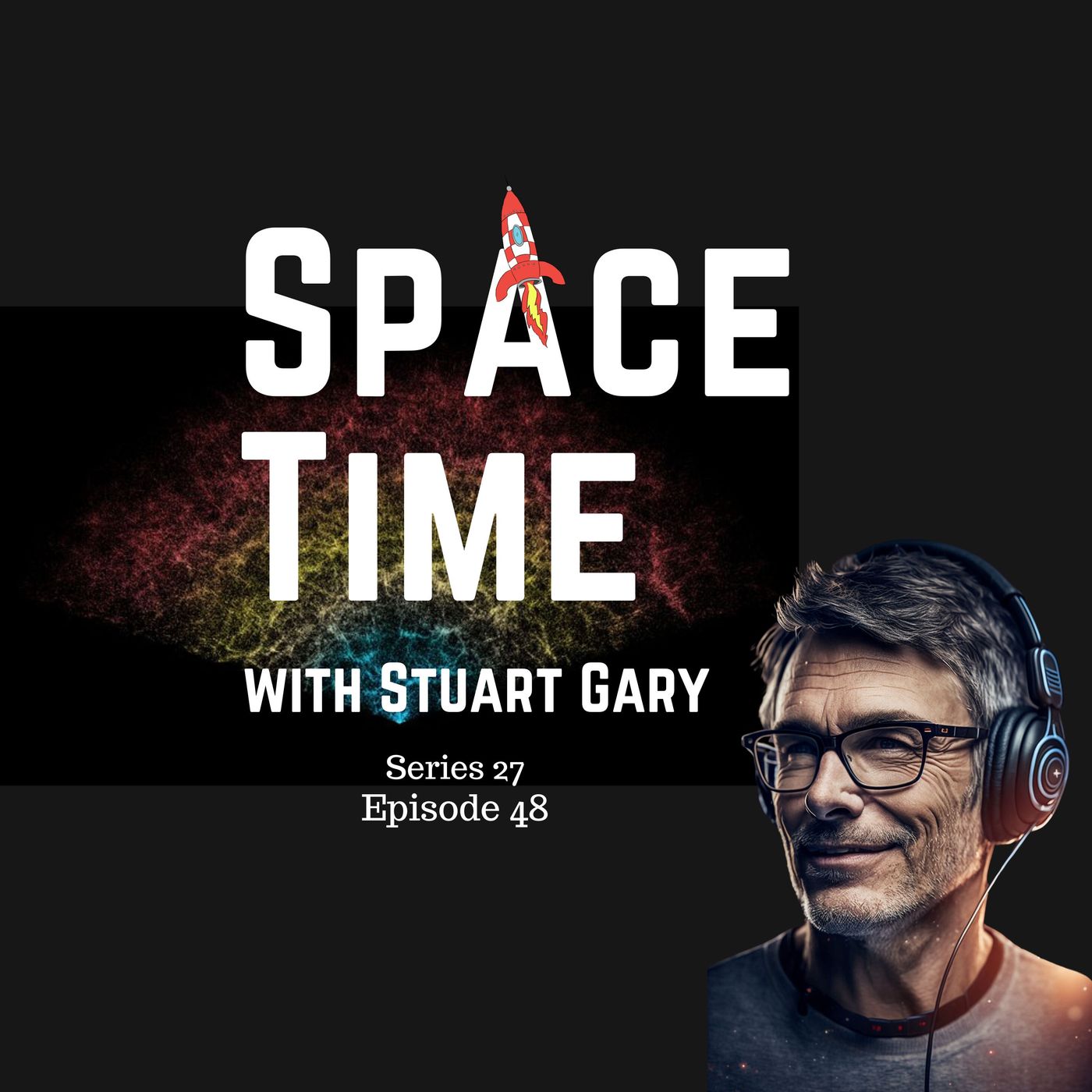
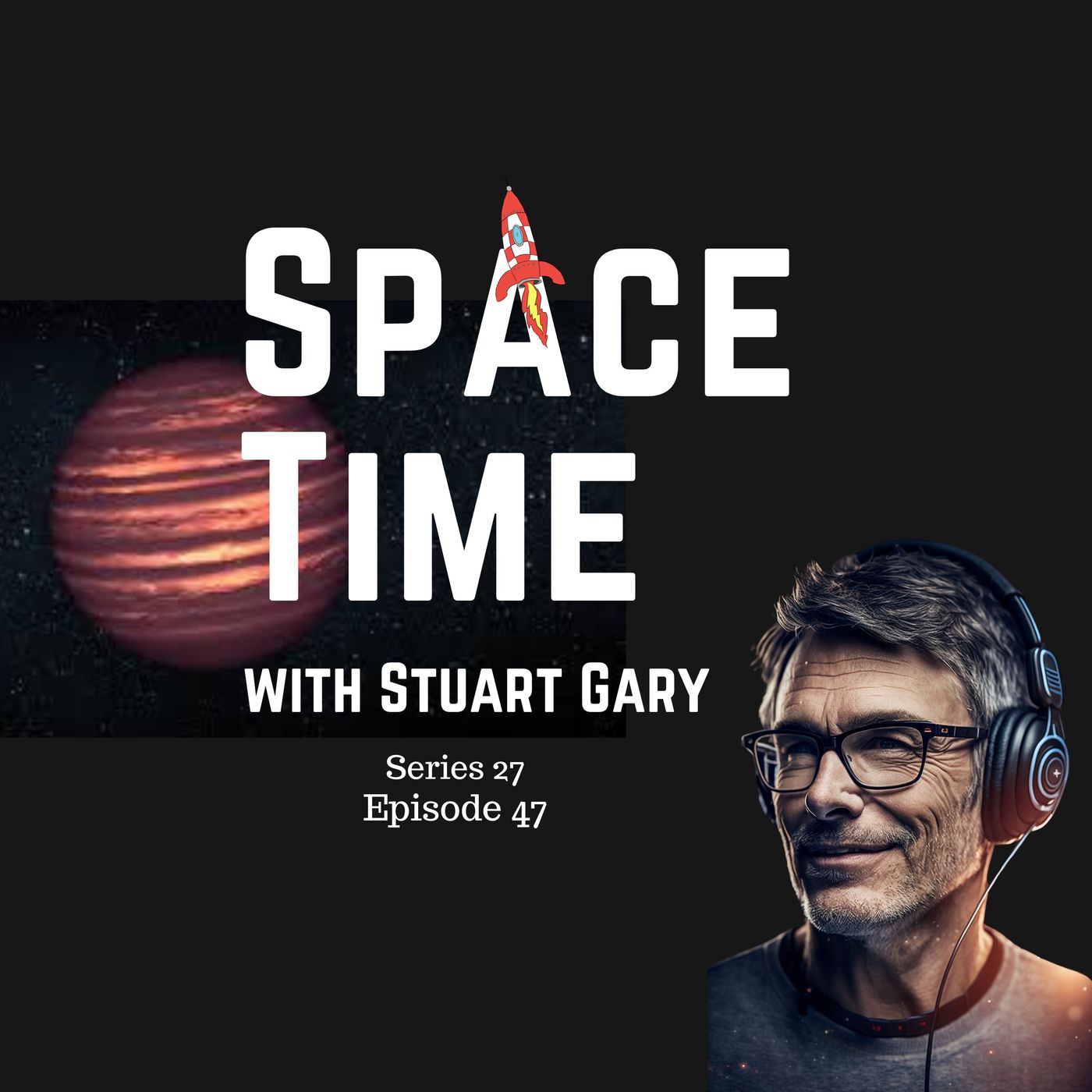
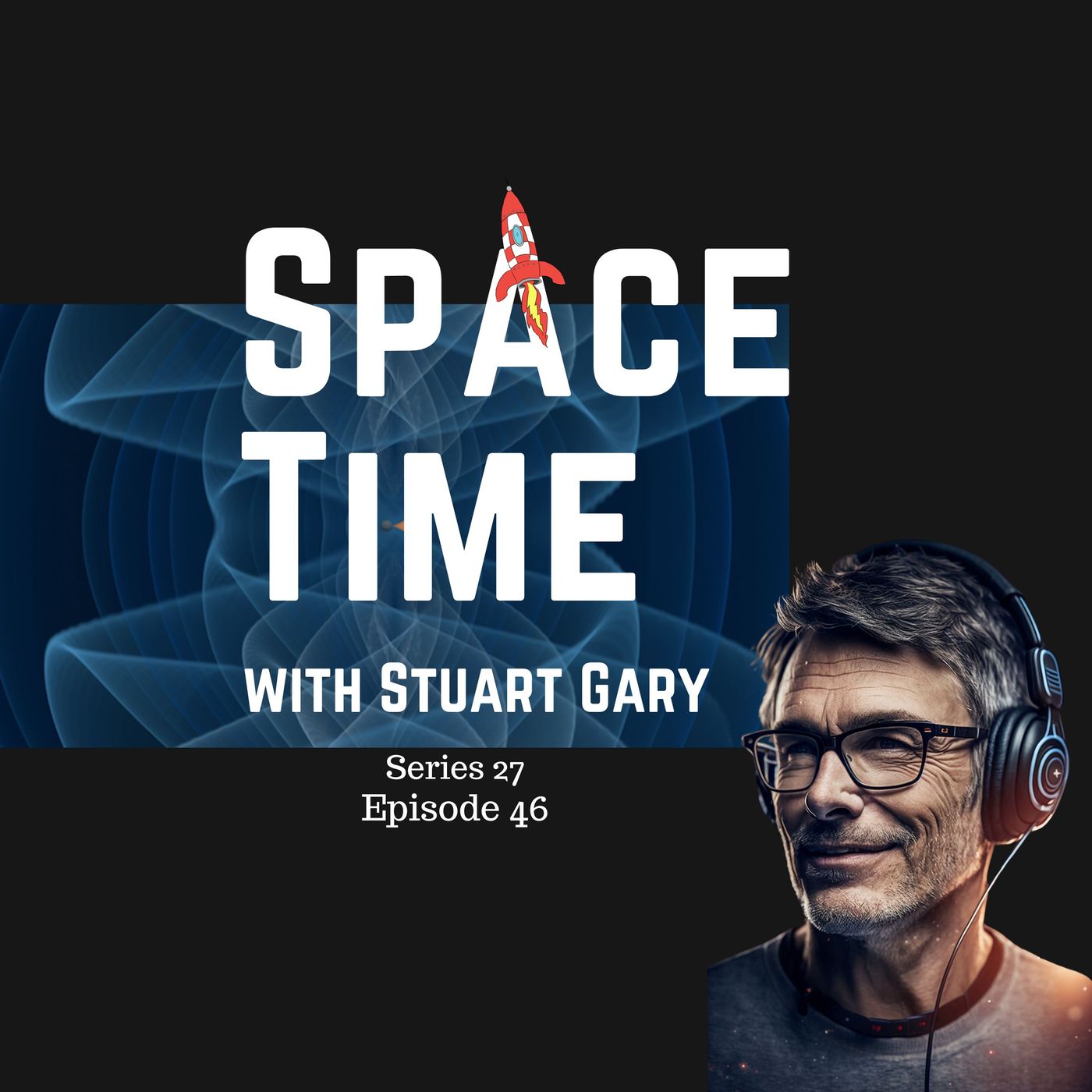


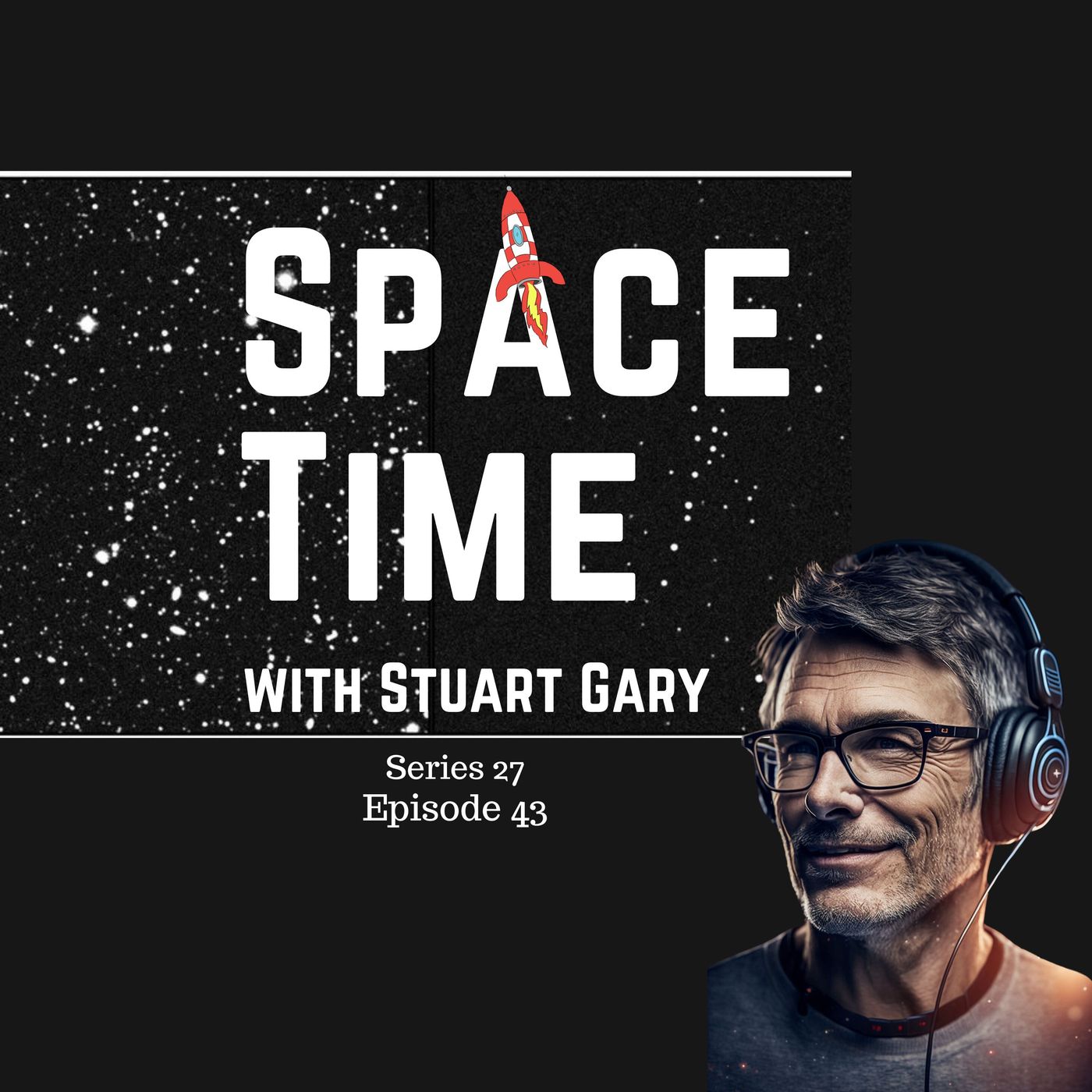
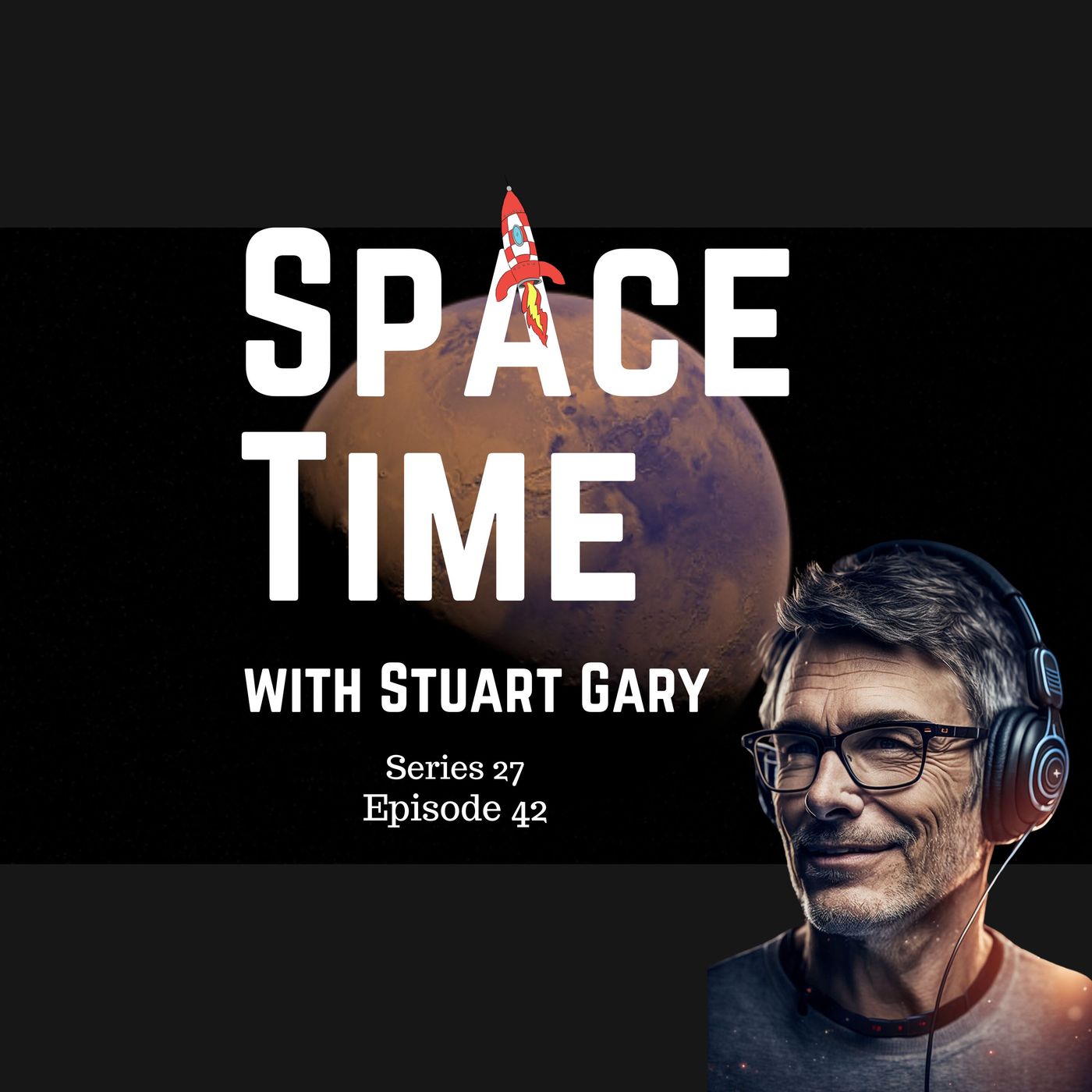
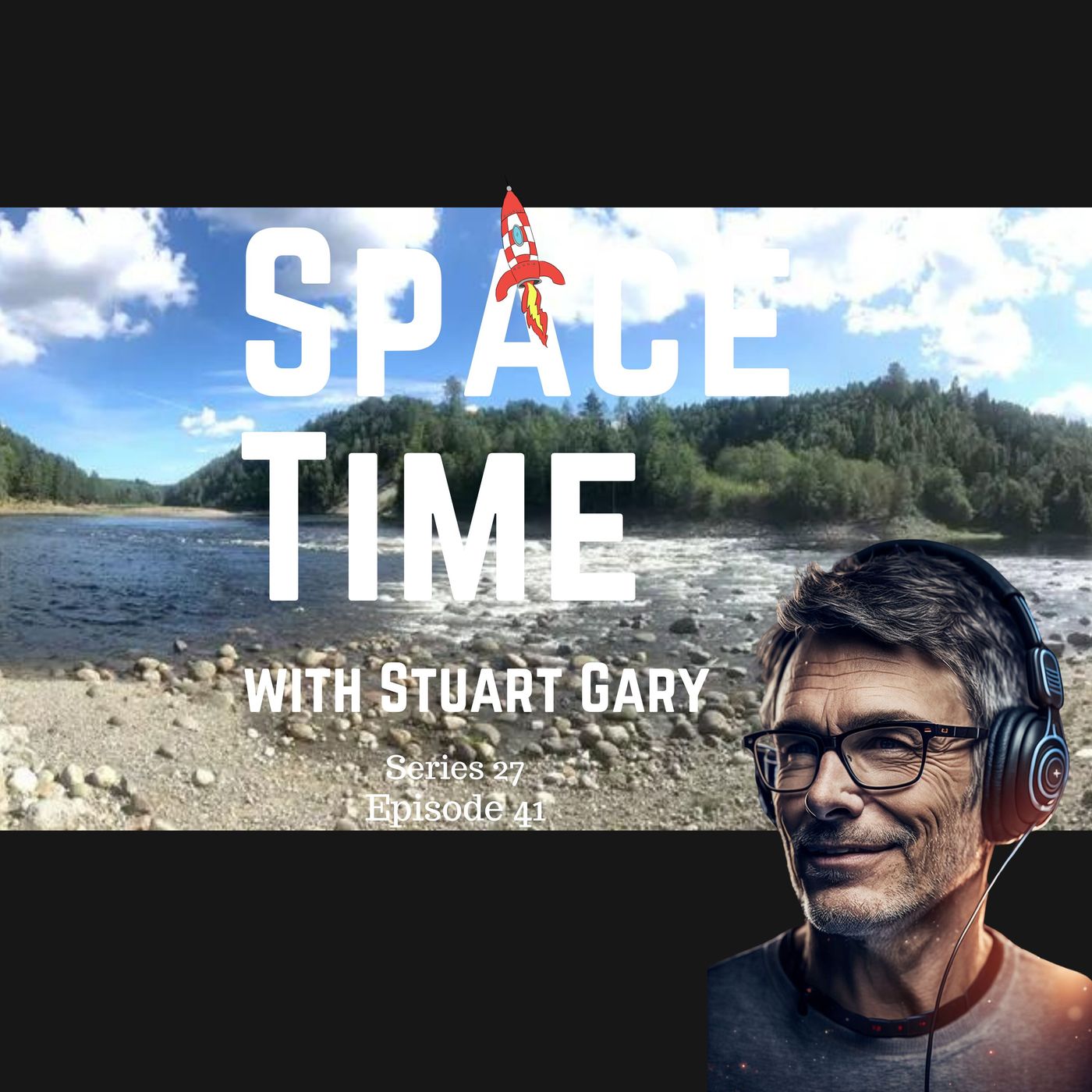

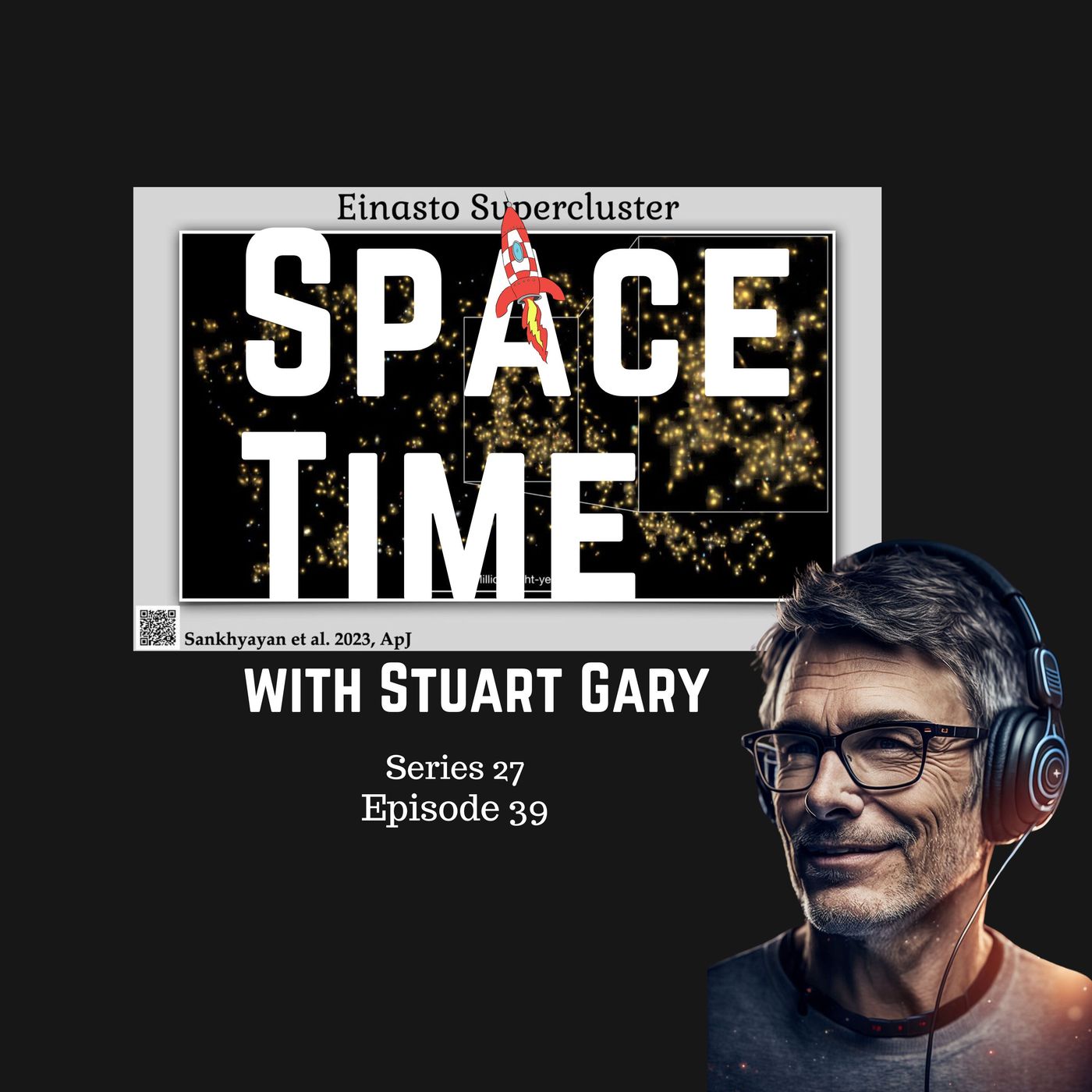
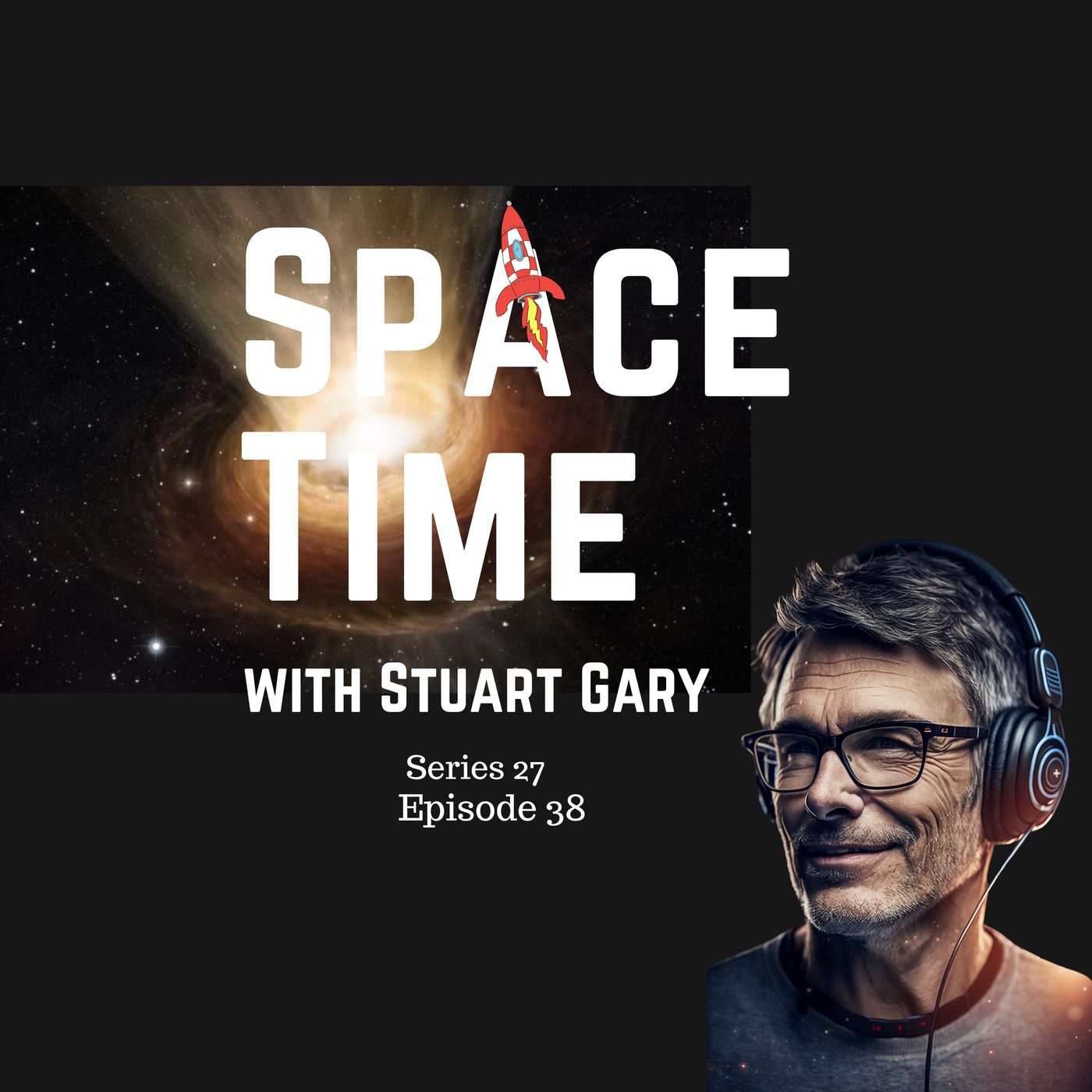

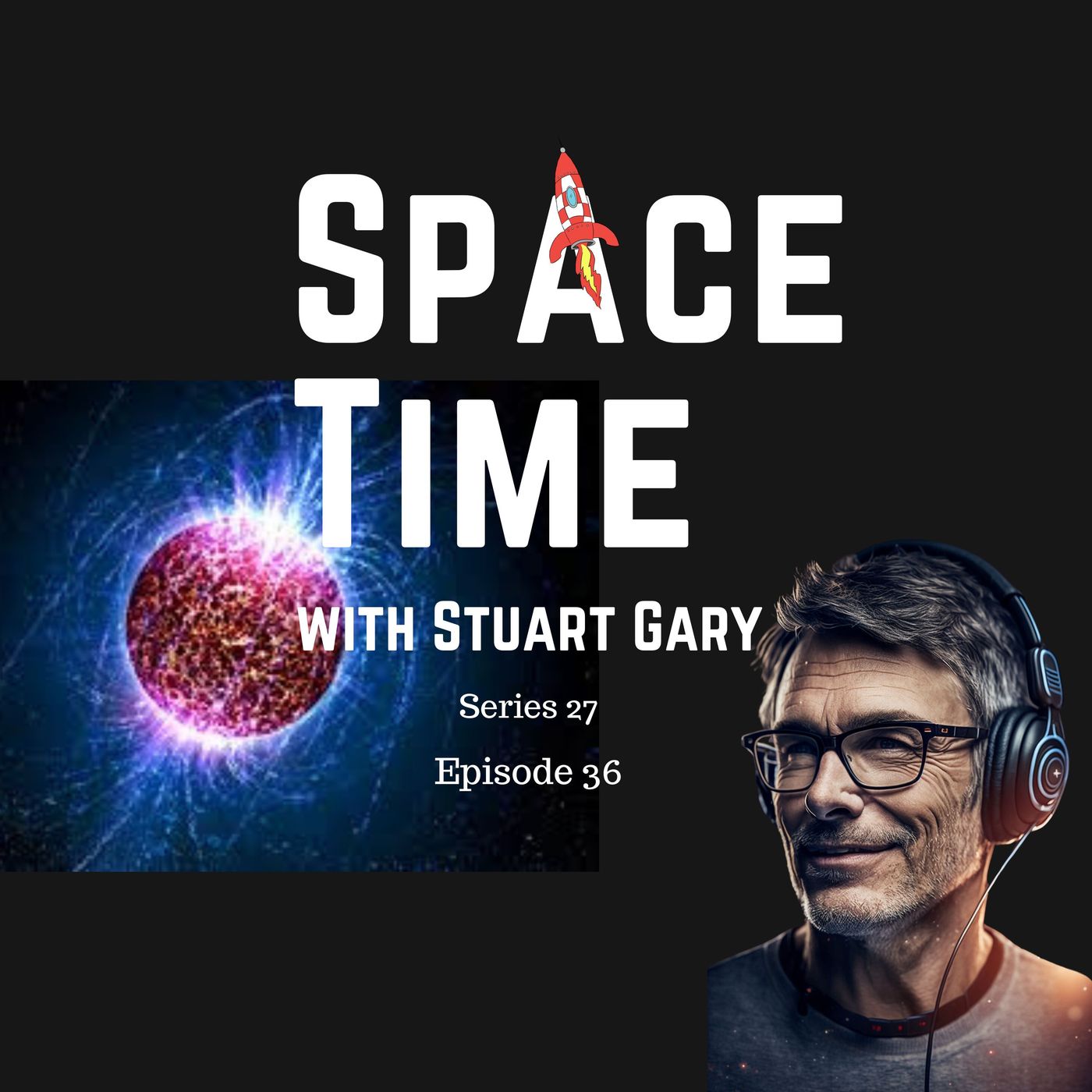
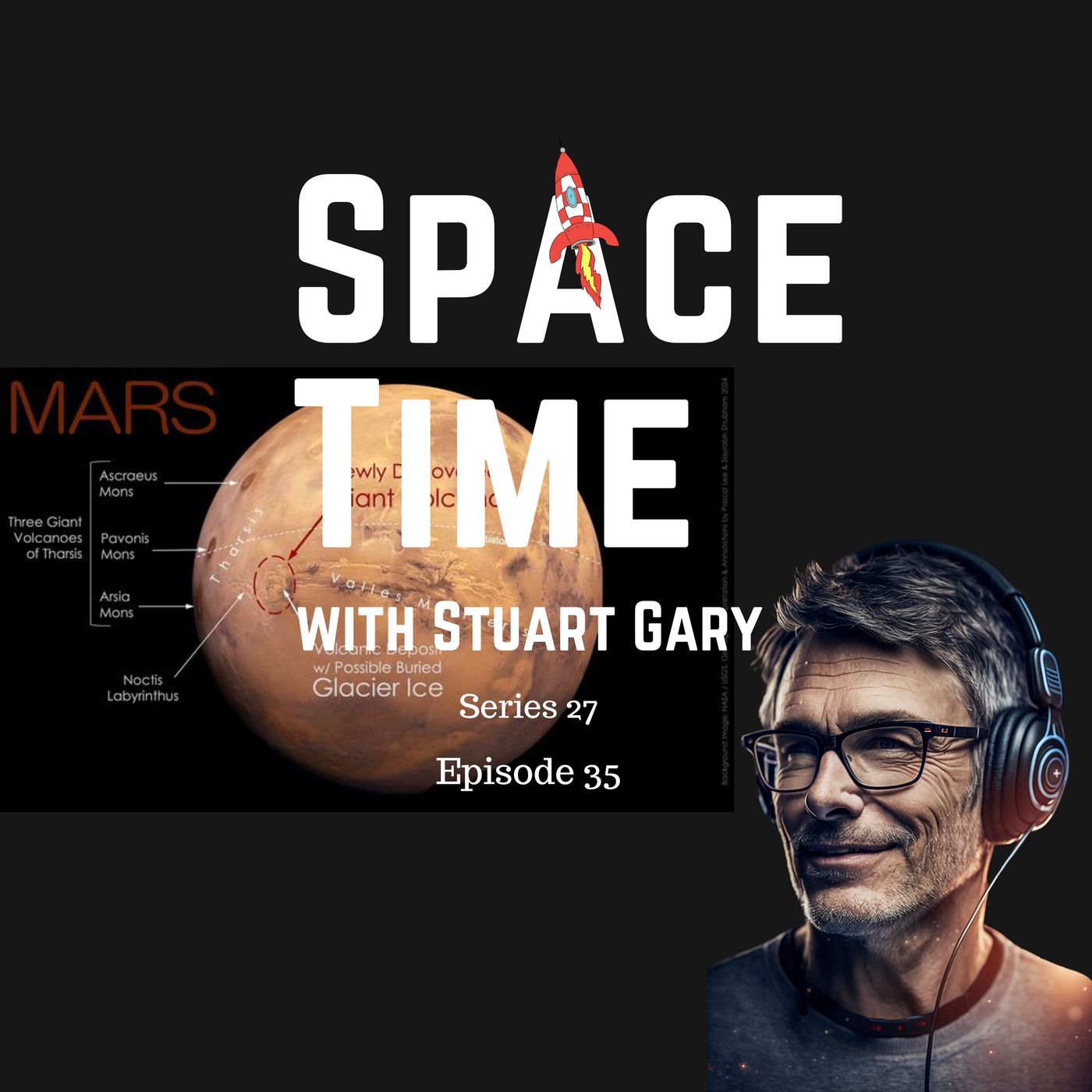
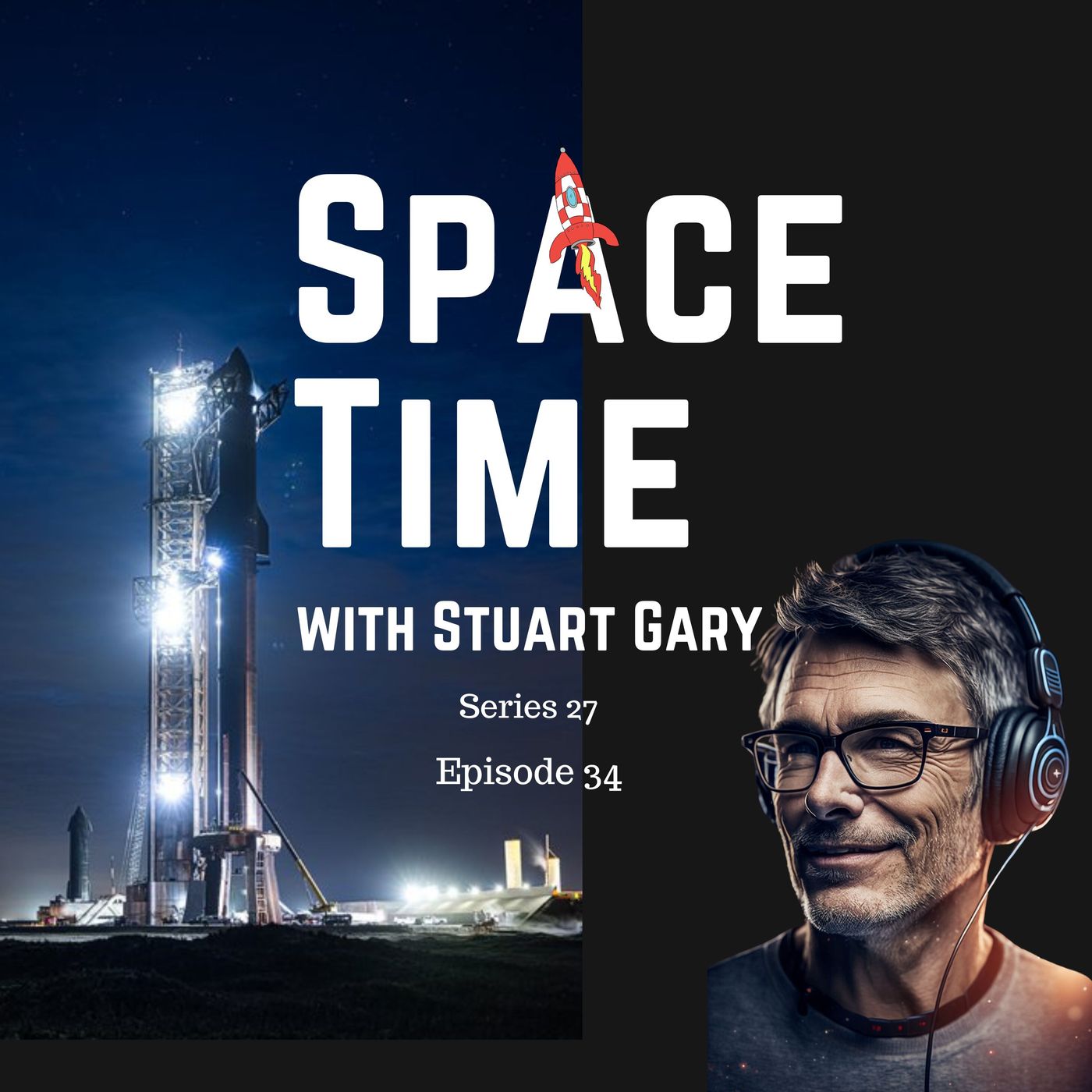

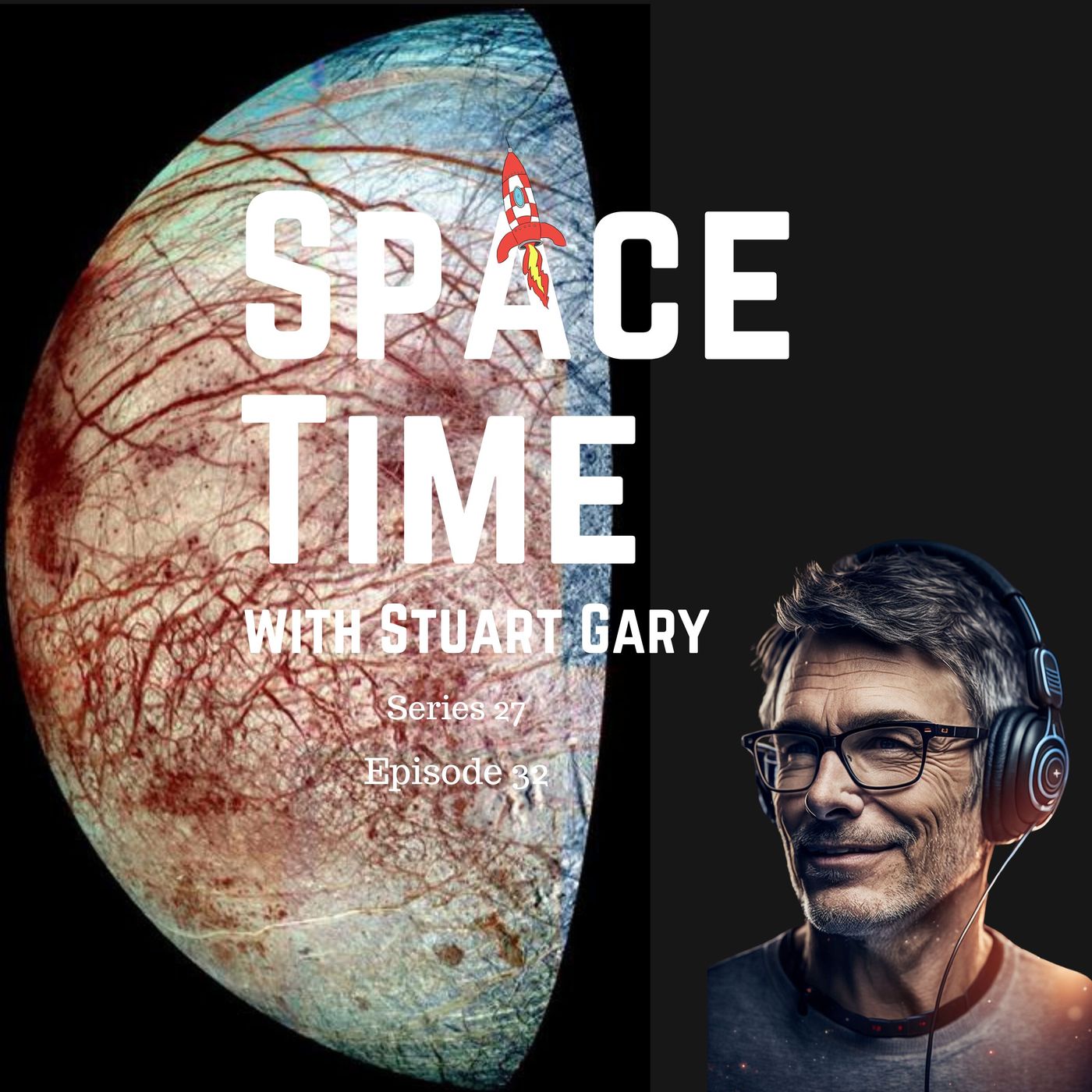

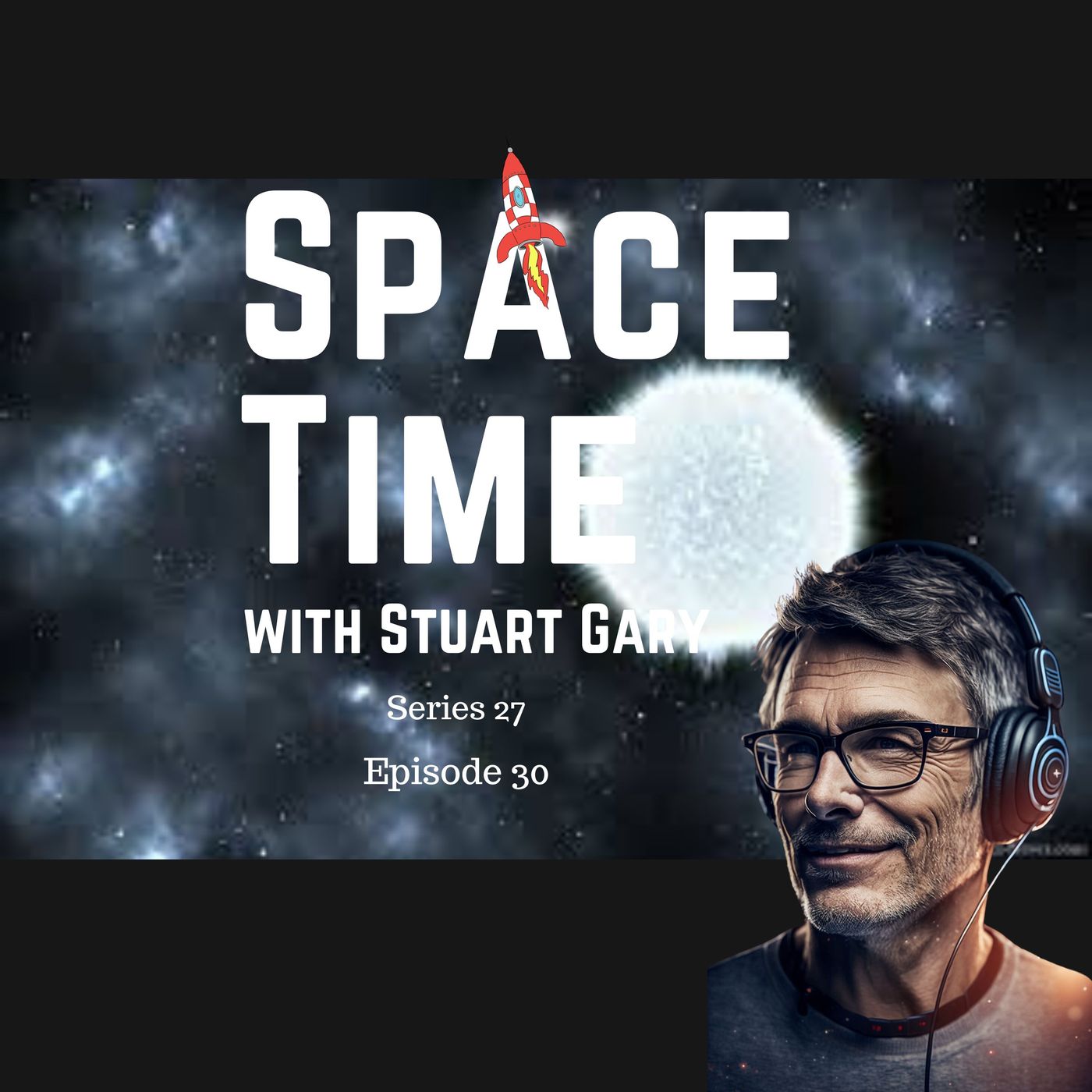
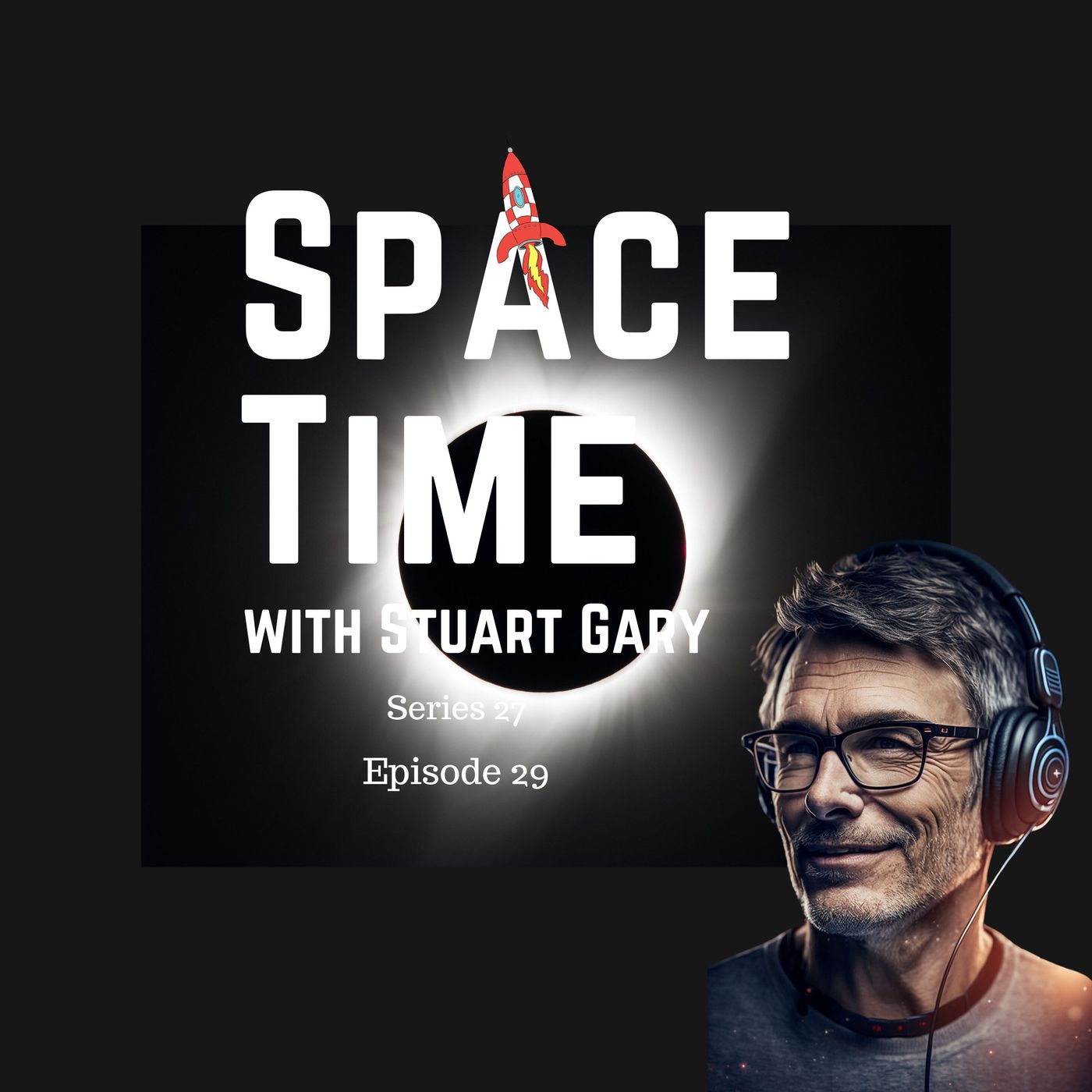



if only scientists where as critical of capitalism or politics in general as of misinformation. it is more convenient to consider an enemy you can defeat, than one who makes possible your survival within the system. so scientists sound towards politics as they did towards religion when such was the dominant force. they hide their criticism so they can do their work, even though they do not believe in that system. it is not a system led by scientists, but by force of opinion.
The Australian Sceptic on this podcast is a misinformation and conspiracy nut, he thinks he is educating the audience with his insights and brilliant deductions. Gary should tell him to go away or stick to statistical proof provable facts without opinions
your idiotic, trump-ish Covid "science news" was bad enough now attacking young activists for their peers allegedly not wanting to eat a product that doesn't exist is next level. science smart you are definitely not. bye bye fool.
loved it
very informative , well done, I listen to every single one with great pleasure